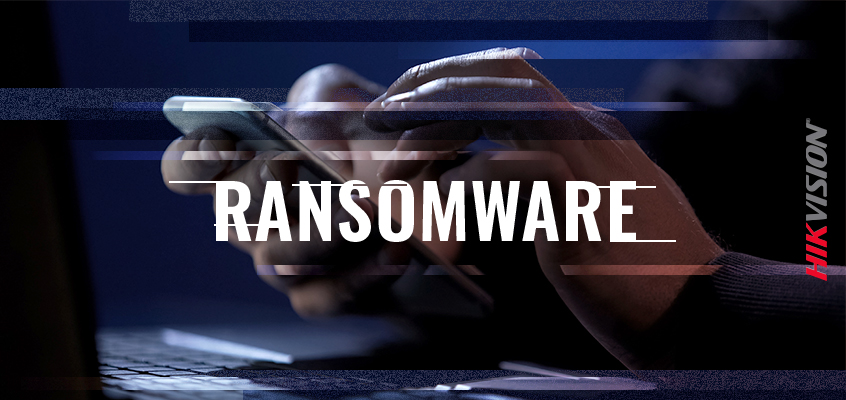New Ransomware Challenges, Plus 4 Tips to Protect Yourself from Ransomware

Ransomware, a diabolical form of malware that is silently installed on someone’s computer after they fall for a phishing attack, continues to pose a threat. Chuck Davis, Hikvision’s VP of Global Information Security, provides information and tips to help you avoid becoming a victim to ransomware.
What is Ransomware?
Ransomware quietly encrypts any data on a connected USB or mounted shared drives, as well as files and folders on your computer. A screen then appears on your computer informing you that your data is encrypted and in order to receive the key to decrypt your files, you must pay a ransom to the threat actor.
While ransomware is evil, we can now put a dollar value on having data backups. In addition to your time, a good and timely backup is worth at least hundreds, if not thousands of dollars, which are collected in Bitcoin by threat actors, so it is difficult to trace. The good news is, you can ignore the ransom and reinstall your operating system and restore your files, providing you have a good data backup.
A Current Ransomware Challenge Threatens Corporate Websites
Ransomware is nothing new, but a recent article in Bleeping Computer shows just how much of a challenge it currently is. Industrial Spy, a data extortion gang that recently began using ransomware as part of their attacks, has been hacking corporate websites to publicly display ransom notes. As part of their attacks, Industrial Spy will breach networks, steal data, deploy ransomware on devices, and then threaten to sell the stolen data if a ransom is not paid.
“As first noticed by security researcher MalwareHunterTeam, this attack stands out because the threat actors also hacked the company's website to display a message warning that 200 GB had been stolen and would soon be up for sale if the victim did not pay a ransom,” said the article.
Protect Yourself from Ransomware
Don’t allow yourself to become a victim to ransomware. Hikvision’s Davis provides four tips to protect yourself:
- Data Backups: The first and most important thing that you can do is back up your devices. Check out the Hikvision article on data backups.
- Patching: Patches are updates to a computer program or its data that improve or fix it. By installing patches as soon as they are released or setting automatic patching where available, you can keep your system up to date.
- Multi-Factor Authentication (MFA): Enable MFA where available to better protect your accounts and devices. This also protects against credential stuffing attacks.
- Use a Password Manager: Using a password management tool can help you create strong, unique passwords for every account. A password manager is a software tool that is used to store your passwords in an encrypted file so that you, and no one else, have very easy access to them, helping to minimize security concerns.
Stay up-to-date with cybersecurity by visiting Hikvision’s online Cybersecurity Center.
